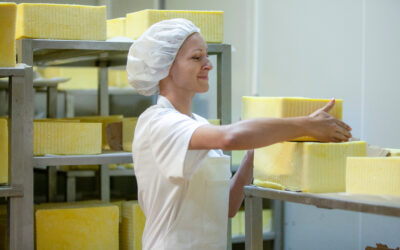Thus far, at least seven entities are engaged in fighting food fraud in the USA. Their efforts are as follows:
Food Protection and Defense Institute (FPDI)
FPDI maintains the “Economically Motivated Adulteration Incidents Database.” (foodprotection.umn.edu/innovations/food-fraudema/incidents-database).
It contains information compiled through literature and media searches of Economically Motivated Adulteration (EMA) incidents in food products since 1980.
Global food-fraud incidents by food product category through 2016 are highest for fish/seafood, followed by dairy products, meat products, alcoholic beverages, oils/fats, grain products, honey/sweeteners, spices/extract, other foods, produce, other beverages, fruit juices, coffee/tea, eggs, food ingredients and animal feed. Global food-fraud incidents by method through 2016 are highest for dilution, substitution, artificial enhancement, mislabeling, counterfeiting, trans-shipment/origin-masking, intentional distribution of contaminated product, and theft/resale.
Getting ahead of the problem must come sooner to mitigate human health consequences and economic loss, through: (a) better detection methods, (b) early warning analysis, (c) inspection, (d) routine laboratory testing, (e) cost-prohibitive laboratory testing (riskiest food products), (f) data management technologies in which the food and agriculture stakeholders can regularly and proactively share real-time information across the globe, and (g) development of algorithms that can assist in identifying the environments where food fraud is likely to occur, or may already be in the system.
US Pharmacopeial (USP)
A non-profit scientific organization, US Pharmacopeial, which helps set standards for the quality, safety and benefits of food and medicines in the US, recently disclosed that “olive oil, milk, saffron and coffee have joined honey and fish as the most common fraudulent products on the market.”
The USP describes more than 2,000 recent food fraud incidents (e.g., in coffee, tumeric powder, seafood, candy, edible oils/fats, mustard oil, honey, shrimp and salmon). It also provides simple tests for detecting adulterants (e.g., chalk powder in sugar, talcum powder in cardamon, sawdust in chili powder, chicory in coffee, horse dung in coriander, colored grass seeds in cumin, mashed potatoes in milk, molasses in honey and cottonseed oil in peanut oil). USP’s database of food fraud reports can be viewed at foodfraud.org.
Food Fraud Initiative (FFI)
FFI recently reported the following: (a) Food is most vulnerable for fraud when it is in the supply chain, and “more so when there is change in ownership.” (b) The more vendors a raw material or product passes through, the more at risk it is for adulteration, which is why experts advise that food or ingredients from third-party vendors should be tested by commercial food companies. (c) Companies should look at Economically Motivated Adulteration (EMA) from the bad guy’s perspective and take measures to discourage them from attacking their industry. (d) Processors should ensure that they meet their respective Global Food Safety Initiative certification (e.g., BRC, SQF or FSSC 22000). If they do, they will be in good stead with FDA and FSMA. (f) If they do GFSI, they technically, at this point (until we have additional insight from FDA), will meet the FSMA compliance for EMA and food fraud.
NSF International (NSFI)
NSFI believes that food fraud is a cross-border issue which exists globally and cannot be dealt with inside national borders and that international cooperation and concerted action is required.
Work being done to improve control and testing of product and supply integrity includes: (a) new standards and controls for agents and brokers, (b) additional clauses to detect fraud in GFSI-certified standards, (c) training of company personnel and regulators of fraud awareness, (d) encourage whistle-blowing by company personnel, and (e) strong and sound corporate culture to mitigate fraud.
NSFI has developed a concept for “Food Fraud Awareness, Detection and Prevention” that consists of these seven steps: (1) horizon skanning, (2) use of fraud- and maturity-models to understand product exposure, (3) assess culture of buying behavior, (4) deliver training on commercial drivers and KPIs, (5) work with supplier base to develop long-term sustainable trusted relationships, (6) use risk-based control model for testing and specifications, and (7) develop risk assessment and supply-chain assurance programs.
Food and Drug Association (FDA)
The Food Safety Modernization Act (FSMA) was enacted by Congress in 2011. Congress included, among its seven “food safety concerns” in FSMA, “Protection Against Intentional Adulteration of Foods.” Now, companies will be required to consider the potential for intentional adulteration as part of their Hazard Analysis while developing their Food Safety Plan as a part of “Preventive Controls for Human Food” (PCHF).
Four key activities/operations within a food system that are most vulnerable to intentional adulteration identified by FDA are: (a) bulk liquid receiving and unloading, (b) liquid storage and handling, (c) secondary ingredient handling (the step where ingredients are handled before being combined with the primary ingredient) and (d) mixing and similar activities. Facilities should complete their own vulnerability assessment and identify actionable process steps as focused mitigation strategies in their Food Defense Plan.
Each facility is now required to complete and maintain a written Food Defense Plan that assesses their potential vulnerabilities to deliberate contamination where the intent is to cause wide-spread public health harm. FSMA requires food facilities to carry out a vulnerability assessment as part of their Food Defense Plan. The plan must include: (a) actionable process steps, (b) focused mitigation strategies, (c) monitoring, corrective action and verification, and (d) record-keeping and training.
Food Safety and Inspection Service (FSIS)
The USDA-FSIS paper “Developing a Food Defense Plan for Meat and Poultry Slaughter and Processing Plants” focuses on how to protect the food supply from intentional contamination with a variety of chemicals, biological agents or other harmful substances. These agents could include materials that are not naturally occurring or are not routinely tested. Intentional malicious acts are generally not reasonable and are hard to predict. This paper lays the groundwork and provides worksheets for developing a Food Defense Plan.
Global Food Safety Initiative (GFSI)
GFSI has benchmarked (i.e., “recognized”) certain manufacturing schemes (e.g., BRC, SQF, FSSC 22000), primary production schemes (e.g., Canada GAP, Global GAP), and primary & manufacturing schemes (e.g., Primary GFS, Safe Quality Food Code).
The GFSI Board recognizes that the driver of a food fraud incident might be economic gain but–if a public health threat arises from the effects of an adulterated product–this will lead to a food safety incident. GFSI’s “Food Fraud Think Tank” recommends mitigation of food fraud by requiring a different perspective and skill-set than for food safety or food defense because socio-economic issues and food-fraud history are not included in the traditional food safety or food defense risk assessments.
GFSI’s Food Fraud Think Tank recommends that processors: (a) Conduct a food fraud vulnerability assessment. In it, they should collect information at the appropriate points along the supply-chain and identify/prioritize significant vulnerabilities for food fraud. (b) Ensure appropriate controls are put in place to reduce the risks from these vulnerabilities. (Control measures may be monitoring, testing, origin verification, specifications, and supplier audits).
SSAFE
GFSI recognized the work of SSAFE, a more agriculture-oriented consortium, that aims to develop and publish guidelines for companies on how to assess and control food-fraud vulnerabilities within their organizations and supply chains. SSAFE worked to have these guidelines available before the release of Version 7 of the GFSI Guidance Document, so that companies and scheme owners could prepare their organizations before the new requirements are effective.
Using logic that combined considerations of Opportunities, Motivations and Control Measures, SSAFE developed Clause Names (a) and Requirements (b): (a) Food Fraud Vulnerability Assessment–(b) The Standard shall require that the organization have a documented food fraud vulnerability assessment in place to identify potential vulnerability and prioritize food fraud mitigation measures; (a) Food Fraud Mitigation Plan – – (b) The Standard shall require that the organization have a documented plan in place that specifies the measures the organization has implemented to mitigate the public health risks from the identified food fraud vulnerabilities. This plan shall cover the relevant GFSI scope and shall be supported by the organization’s Food Safety Management System.
British Retail Consortium (BRC)
In the Global Standard for Food Safety (Issue 7), mention is made of “food defense” and “authenticity” in Clause 1.1.3; “authenticity” in Clause 1.1.6; “fraud” and vulnerability” in Clause 2.7.1; “authenticity” in Clause 3.5.1; “substitution” and “fraud” in Clause 3.5.1.1, and; “fraud”, “authenticity”, “provenance”, “assured status” and “identity preserved” in Clause 5.4. Definitions are provided in the GSFS glossary for each of the terms: risk, vulnerability, authenticity, provenance, adulteration, assured status and identity preserved.
In Clause 5.4, BRC defines: Food Fraud as intentional substitution, dilution, or addition to a product or raw material, or misrepresentation of the product or material for financial gain, to increase the apparent value of the product and/or reduce the cost of production, and Food Authenticity as ensuring the food or raw material purchased and offered for sale are of the nature, substance and quality expected.
Understanding Food Safety, Defense and Fraud
Wayne Labs, in Food Engineering (February and March Issues, 2016), has clarified the similarities/differences in Safety, Defense and Fraud as follows: (a) Food Safety uses HACCP to identify Hazards–accidentally caused–for prevention of unintentional adulteration; (b) Food Defense uses TACCP to identify Threats–ideologically motivated–for prevention of intentional adulteration, and; (c) Food Fraud uses VACCP to identify Vulnerabilities–economically motivated–for prevention of intentional adulteration.
He further describes: (a) HACCP (Hazard Analysis Critical Control Point) as a management system focused on assuring the production of safe food, with the evidence to prove it; (b) TACCP (Threat Assessment Critical Control Point) as a system for preventing internal or external intentional, malicious contamination of food, and; VACCP (Vulnerability Assessment Critical Control Point) as a system for minimizing exposure to risk from intentional fraud and potential adulteration.
References:
Adams and Marsh. 2015 www.techni-k.co.uk/threat-vulnerability
Ades et al. 2012. Food Safety (September Issue)
BRC Global Standard for Food Safety, Version 7. 2015
BRC Global Standards, Trust in Quality. 2015.
COSO Study, Analysis of US Public Companies. 1998.
eDigest. 2013. Food Safety. (September Issue)
Europol SOCTA. 2013.
Everstine et al. 2013. Food Safety & Quality. 4:14-15.
FDA. 2016. Preventive Controls for Human Food.
FDA. 2016. (May 26 press release)
foodfraud.org (accessed 2016)
Food Standards Agency. 2016. food.gov.UK
Fusaro, Dave. 2015. Food Processing (May Issue)
Global Food Safety Initiative. 2016.
Grocery Manufacturers Association. 2015.
Labs, Wayne. 2016. Food Engineering. (February Issue)
Labs, Wayne. 2016. Food Engineering. (March Issue)
Meeker, David. 2015. Render (October Issue)
National Center for Food Protection and Defense. 2013.
National Center for Food Protection and Defense. 2014.
Nickelson, Nick. 2014. personal communication.
NSF International. 2014.
Publically Available Specification (PAS) 96. 2014.
Sayer, Steve. 2015. Meatingplace. (September Issue)
Smith, Gary. 2014. British Retail Consortium Conference (San Antonio, TX)
Spink, John. 2016. Food Fraud Initiative. (January Issue)
Spink, John. 2016. Food Fraud Initiative. (February Issue)
SSAFE, www.ssafe-food.org (accessed 2016)
The Food Protection and Defense Institute. foodprotection.umn.edu/innovations/food-fraudema/incidents-database (accessed 2016)



